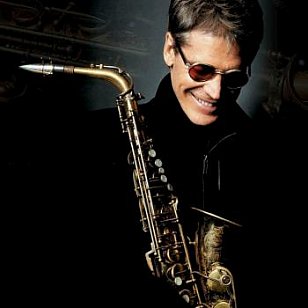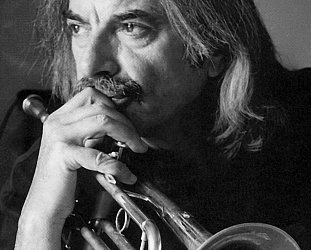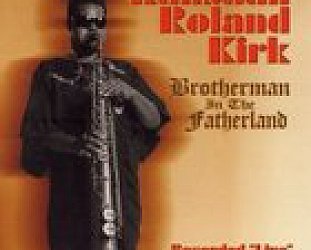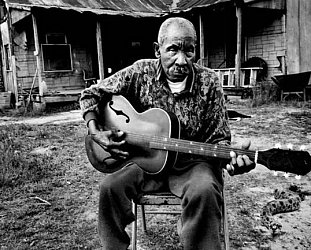Graham Reid | | 7 min read

A little over three years ago an American magazine profiled alto saxophonist David Sanborn and included a selected discography. It made terrifyingly impressive reading. Aside from almost a dozen albums under his own name – and a pretty high count of Grammy awards among them – there were the albums where he’d had a guest spot.
That distinctive sandpaper sax you remember from Bowie’s Young Americans? That was Sanborn.
So you’ve got the Stones’ Undercover or Stevie Wonder’s Taking Book in your collection? Then check the small print. Yep, Sanborn was on them too.
And on albums by James Taylor, Steely Dan, Linda Ronstadt, Roger Waters and flash hot jazz guitarists John Scofield and John McLaughlin.
Sanborn gets around all right – but somehow he’s been pigeon-holed as a “jazz” musician, a label he doesn’t feel entirely comfortable with.
But at 46 he could probably care less, Sanborn – current on the road with a cracking five-piece band of ex-Miles Davis guitarist Robben Ford, drummer Sonny Emory, percussionist Don Alias, Ricky Peterson on keyboards and Paul Peterson on bass – is just out there going this thing.
Call it jazz if you will – but check his latest album, Another Hand, and you’ll hear the altoist flex himself in the company of musicians such as guitarist Marc Ribot (who tours and records with Tom Waits and Elvis Costello), singer Syd Straw (one-time Golden Palomino) and bassist Marcus Miller, who crafted Tutu and Siesta for Miles Davis.
If this was jazz, then it came with a Bart Simpson eat-my-shorts attitude if you didn’t like it. Sanborn was stretching out.
It is worth acknowledging, however, that anotherhand came after a long line of bestselling, sometimes fairly MOR recordings which captured the popular consensus but often left critics bewailing Sanborn’s commercially viable albums while other more adventurous saxophonists were ignored. That was hardly Sanborn’s fault, of course.
But lately critics have come to terms why Sanborn and his success. When Downbeat magazine reviewed Another Hand last September critic Frank-John Hadley grudgingly got it right.
“For years,” he wrote, “David Sanborn’s suffered detractors dismissing his Grammy-filled ‘jazz’ career as nothing more than one long soak in the tepid bath water of pop music. Let’s remember, alas, this Butterfield Blues Band alumnus had the jazz designation foisted upon him; his head and heart have always belonged to R ‘n’ B.”
Which probably explains why Sanborn’s dozen albums under his own name sell so well. He crafted a good melody, has his own sound, developed in studios and on the road, and now looks back on a career which began in earnest one day in San Francisco in 1967.
Growing up in St Louis he had played R ‘n’ B as a teenager with Little Milton but came to serious attention on the Paul Butterfield Blues Band album The Resurrection of Pigboy Crabshaw.
“I literally ran into a friend of mine, Phil Wilson [drummer with the Butterfield band] on a street in San Francisco. He said, “Why not come down to Fillmore Ballroom to see the band?”
“So I did, then joined them on the bus down to LA and was hanging out in the studio and they said, ‘Why don’t you play on this tune?’ And one thing led to another...”
It led Sanborn to record and tour with Butterfield and then with the Brecker Brothers and, but the mid 70s, his name was appearing on those superstar albums. From a distance it seemed Sanborn was the consummate studio musician, the one who could pull out a searing, soaring sound for Bruce Springsteen (on the Born to Run, album) or fit right in alongside an MOR jazz player like Bob James.
“I have this reputation of being session player,” says Sanborn with audible patience, “but I’m not really. Most of those sessions were related to bands I was playing on the road with, so it was never a matter of not going on the road to stay in town and odd studio sessions.
“In reality, I was on the road eight or nine months a year during that period. I’m probably on the road less now because I have my own band. Now I’m only out about six months a year.”
What kept Sanborn slightly more stationary in recent years was a weekly television show Night Music, which for two years put on the small screen the most extraordinary collection of musicians.
In an MTV world of top 40 and video clips, Night Music broke all the rules.
With Sanborn as presenter, the show would bring together Leonard Cohen, Sonny Rollins and Was Not Was on the same show. Al Green would sing with the eccentric Sun Ra Arkestra and the Residents could be on the same programme as Bootsy Collins, Nick Cave or jazz guitarist Pat Metheny. This was television – and music – as Sanborn envisioned it.
It was so good it obviously couldn’t last.
Beamed out at 12:15am Eastern standard Time on a Sunday morning, it had American audiences across the country setting their video recorders for the wee small hours. And the sponsors, Michelob, pulled out after two seasons in 1990.
“We’re talking commercial television here,” says Sanborn, who still hosts a weekly radio show which is syndicated in America. “If you deal with music that a large audience will not watch, then you are way out of line. But I enjoyed doing it because, first of all, it was fun and we were something worthwhile. Given the opportunity, I’d certainly do it again.”
While the television exposure as frontman-performer and the radio show (taped in advance when he is touring) doubtless helped to raise Sanborn’s profile, it was hardly essential to a career which has seen him secure with the same record company for over 10 years and popular acclaim for albums such as Hideaway, Voyeur and Close-up.
Sanborn’s trademark alto squeal has been much copied by a new generation of musicians but Sanborn himself is reluctant to take credit as an innovator.
Although his guest spots and session work came early in his career, his solo flight path was slower in developing, which allowed him time to discover his own voice on his instrument. By the time he was into his stride making his own albums in the 80s, his was a sound that was instantly recognisable.
“Individuality is very important and it is crucial in music to establish your own identity. I don’t find it very interesting to hear someone play Charlie Parker solos all night, I’d rather go home and listen to Parker’s records. Musicians should come up with their own identity...although you have to understand the past to know where you are coming from.”
Sanborn notes how some musicians – he cites Miles Davis and tenor saxophonist Sonny Rollin as examples – develop their own voice in their 20s. For others, like himself, it comes later.
Inevitably the conversation turns to trumpeter Wynton Marsalis, whom Sanborn, like most other observers, credits with their high profile jazz has had in the past decade. Marsalis is an articulate spokesman for the music, he says, who has inspired record companies to see the marketability of jazz.
Yet Sanborn is also the pragmatist.
“Record companies area business and that’s something a lot of artists forget. They lend money to artists and naturally expect a return. That’s the bottom line. There is also an economic climate of fear, so naturally they go for the sure thing, a Madonna before a Marsalis; because they know they make money.
“Jazz is by nature elitist and demanding of the listener. I don’t mean elitist in a negative sense, it’s just more challenging and therefore doesn’t have a wide audience, no matter how much money is put into it.
“They could put a million dollars into promoting Wynton Marsalis but he’s probably not going to sell any more records then he’s selling now.”
In Sanborn’s case, his back-catalogue of successes is his own promotion. There is a ready audience for his sound and he acknowledges readily “the kind of music I make is more commercial.”
Yet Sanborn is also taking his audience with him. Those who tuned in early on for his Grammy-crunching albums are now hearing him work out in contexts a long way removed from the biting ballads which are still his trademark.
On another Hand, for example, he has jazz bassist Charlie Haden in to play alongside guitarists Ribot and Bill Frisell for Lou Reed’s Jesus. Elsewhere he plays tunes by Marcus Miller and soundtrack composer Bernard Hermann.
That kind of musical eclecticism has allowed Sanborn to tour the top-flight players he is coming here with and to take to stages and recording studios with Bowie and the Stones. And to present television programmes where the Pixies and Sonic Youth fit in alongside Dizzy Gillespie and video clips of Hendrix and John Coltrane.
In such a varied career you have to ask, is there anyone Sanborn would still want to play with? The answer comes back quickly.
“Ornette Coleman,” he says, naming the one-time architect of free jazz in the 50s who has now become the vigorous figurehead of exciting keep-‘em–guessing jazz. “I just heard Ornette play on the film score for The Naked Lunch and – like Sonny Rollins – he’s playing better now than he ever played. To work with Ornette would really be something...”
And there’s any irony in that. When Sanborn programmed some rather astringent material from the Song X album by Coleman and guitarist Pat Metheny on his radio show, there was a price to pay.
“When Song X came out I said, ‘We’ve got to play this record.’ But sure enough we got all these calls and a few stations dropped the show because of that.
That tunnel vision irritates Sanborn mightily. He’s got something to say, this musician who sometimes plays jazz but is reluctant to accept “jazz musician” as a label.
“That’s part of the problem I have with jazz critic’s, they have a certain idea in their heads of what jazz is. Well, I’m sorry, I don’t give a [expletive deleted] what jazz is! I love music and if someone doesn’t like the music because their life is limited by saying, ‘I only like this music,’ then that’s a waste.
“These people don’t have a copyright on the truth. People in the jazz community put down Miles Davis for years and said he couldn’t play or had lost his technique. Yet here was one of the great artists of the century. [Expletive deleted] whether you call him a ‘jazz’ artist...he’s just an artist.
“As a musician, you certainly get to the point where you can’t think of yourself in those categories. I don’t.
"Most musicians don’t think like that and simply say, ‘I do this because it interests me.’
"That’s what has guided me.”







post a comment